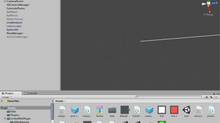Impossible Maps | Week 4
On the Readings
Kurgan uses the examples of satellite images perused in the context of international/state-scale conflicts to show that satellite imageries:
are inherently embedded with a militaristic perspective, and
require the art of interpretation due to data imperfections
I am especially intrigued by the term "Para-Empiricism" that Kurgan proposed. While the prefix "para" encapsulates Kurgan's take on the necessity to debate about and accept the flaws of representations, the word "empiricism" in this article is used in close conjunction with "quantitative" and "objective". The way I see it, it implies a lingering desire/belief (maybe Kurgan's, maybe it's Kurgan imagining herself in our shoes) that there is a true reality that can be reclaimed – although it should come with debates and disputes.
I think "truth" is like any kind of scientific discoveries: a consensus. In this sense, there is no such thing as "the truth" or a "true reality", just different sets of beliefs that are practical to some.
Therefore, we might benefit from acknowledging the futility of discussing the ideal veracity or uncertainty of representations (Para-Empiricism), and pay more attention the practical and economic aspects of what makes a representation a consensus.
For example, in the case of Google satellite images:
Why is Google Earth like how it is now?
How many people use Google Earth?
Who is benefitting from and disadvantaged by these images?
What would incentivize Google to change their satellite images to be more aligned by the disadvantaged's interests?
If there is none, would there be a big enough market to create an alternative product?
What is the cost of switching to a new mode of representation?
/**Extra Note:
I wish Kurgan had also provided an illustration of how problematic the above qualities are in the context of everyday/commercial uses. It was difficult for me to grasp the full extent of "militaristic" and "logistic" perspective's impact on my daily life.**/
***
One big question that I have as a designer/technologist is: how can facilitate more transparent and context-aware transactions of data and representations?
I really like D'Ignazio's "manifesto" of feminist data visualization. It gives me an idea of what transparency should communicate. I think it's a good starting point for critical data-visualization-making, and the ways this could be interpreted could be so diverse and wonderful.
Then again, all these experimental and critical ways of visualizing could only be meaningful when they have become practical to adopt. It might just be impossible to sustain socially-responsible data making through a typical economic relationship (who wants to pay subscription for an experimental map?) and we might just be stuck with adopting whatever the tech-overlords show as our practical truths. Or there might come a time where enough people are more socially and technologically literate, and we collectively decide to have multiple modes of representations.
...I don't know.
On My Final Project
I am working with Dale on the final project. We are making a map of art institutions in Manhattan and their sources of funding (donors).
I have yet to look at the entirety of the data set that Dale collected, but some interesting patterns that I think could be made visible are:
Are there clusters of art institutions in Manhattan? What are the characteristics of these clusters?
How do art institutions interact with their localities?
How have private and public funding spread in Manhattan? Is there a relationship between the location of an institution and the funding it receives? Could we infer why?












